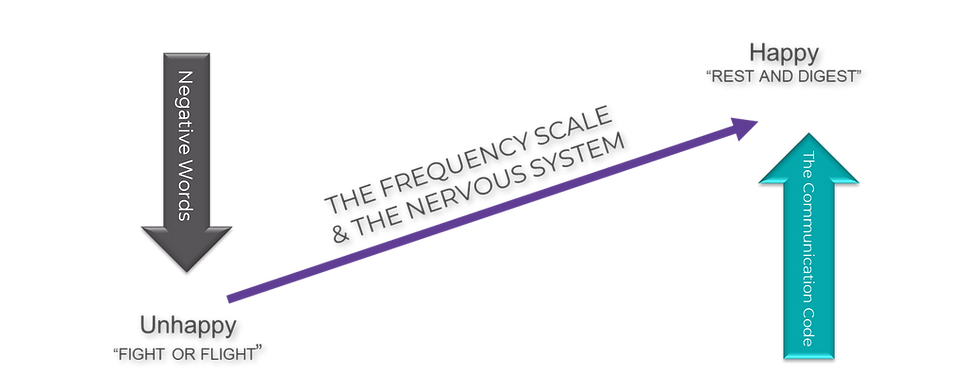In order to understand more about why the Communication Code works, I find it helpful to paint a picture of where we’re starting from.
Let's talk about fear.
Fear affects our ability to be present in a conversation, to connect with other people, to be able to trust.
All of us have a spectrum on the emotional scale from low to high.
At the very bottom are things like despair, anger, overwhelm, and frustration. At the top are feelings of happiness, love, joy, contentment, comfort, and connection.

When our fears are triggered, we travel down the frequency scale of emotions. Add in mental stress or other external stresses we might be experiencing, and you see how difficult it can be to connect with other people.
According to Napoleon Hill, author of the 1937 personal-finance classic Think and Grow Rich, all humans share six major fears – the fear of poverty, criticism, poor health, loss of love, old age, and death.
As a debt collector, I talk to people every day who are triggered by one or more of these fears. Just hearing the words “debt collector” can send someone down the frequency scale.
When happiness and connection became my new North Star, I had to figure out a way to trigger my customers’ happiness and move them up the frequency scale of emotions.
Because when it really comes down it, debt is a burden that prevents people from living the life of their dreams. My goal was to have people feel good about paying their debts.
Think about the industry you work in. Is there a fear on Hill’s list that could be triggered by one of your services?
Just the other week I was providing communication training to bridal store employees. For many brides, a wedding dress is a major and meaningful purchase. The money aspect or fear of criticism can be very triggering and lead to some charged conversations between brides and bridal store employees.
This is when validating – the first step of the Communication Code – becomes so important. Acknowledging people's situations through validation will help you establish a foundation of trust that gets people to want to engage with your further and moves them to a place where they're ready to hear your solutions.
Validating will help people see you as an ally and build instant connection.
Examples of validating phrases include:
“I can see how important this is to you.”
or
“I can understand your concern.”
or
"Thank you for sharing that with me.”
Even if you don’t feel like your industry is directly related to one of Hill's fears, your customers could have something else going on their lives that is putting them in a state of fear and causing them to enter your conversations already triggered.
I encourage you to take this into consideration the next time you are dealing with an upset customer.
Comments